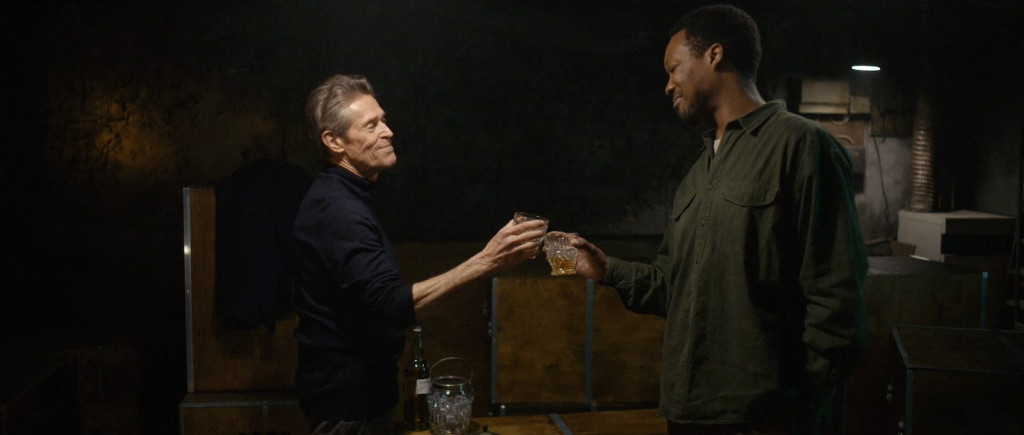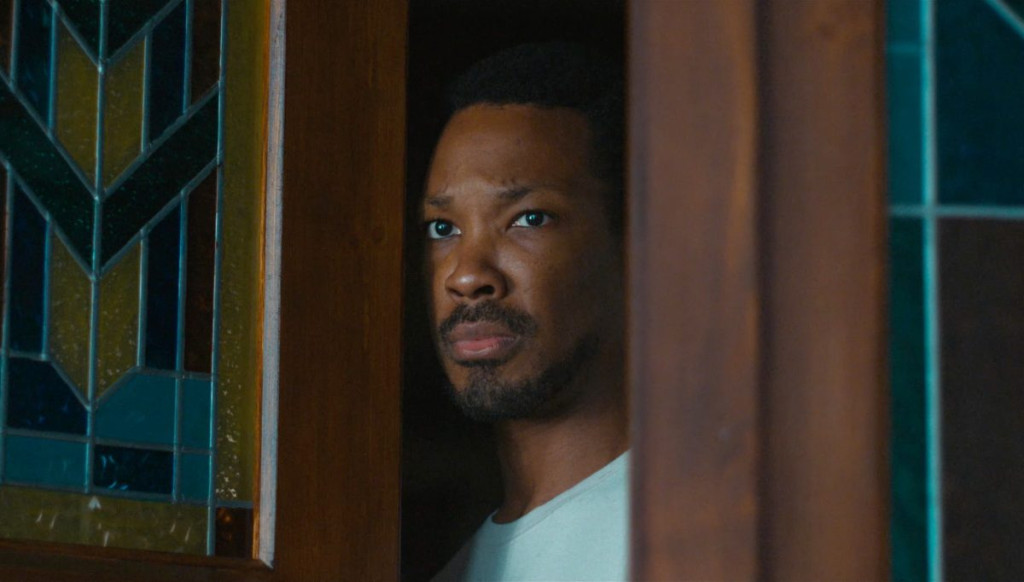Imagine being out of work, your ancestral home under threat of foreclosure, and a knock at the door offers salvation in the form of quick cash.
The catch? A mysterious man named Anniston Bennett, played with unnerving intensity by Willem Dafoe, wants to move into your basement. That’s the setup for The Man in My Basement, set in the early ’90s in Sag Harbor, New York, adapted from Walter Mosley’s novel and brought to the screen by first-time director Nadia Latif.
At its core, the film isn’t just about a financial deal gone wrong. For Corey Hawkins, who steps into the role of Charles Blakey, it’s a meditation on trauma, mental health, and the burdens men carry in silence.

Hawkins was drawn to Charles because of his imperfections. “His flaws and his cause—how often do we see trauma when we tell stories that are centered on a particular Black experience? But it’s not this particular trauma,” he said. “He’s dealing with psychosis. He’s dealing with loss. He’s dealing with mental illness. And how do you talk about that without talking about it?”
Charles is a man weighed down by loss, regret, and the slow erosion of his future. Drinking heavily and financially destitute, he drifts through his days in the once-handsome but now rundown family home that has sheltered eight generations before him. The house, filled with memories of nursing his late mother and uncle, has become both his refuge and his prison.
When asked how he avoids judging the characters he plays, Hawkins admitted he initially came in with hesitation.
“I certainly came in with a little bit of judgment with Charles. Cause you can’t truly sort of excise or get in there without finding love for that character. That was the biggest thing throughout the rehearsal process—doing all the work, really understanding. Me and Nadia really teased it out. Just because you sit with this man. You see him standing and making a cup of tea, but do you see the weight of it, and everything else that’s underneath him?”
Rather than dramatizing the characters’ struggles with heavy exposition, the film weaves them into Charles’s choices, silences, and unraveling. After Anniston moves into the basement, building and locking himself into a prison cell, Charles begins to see and hear things, leaving both him and the audience unsure of what is actually real.
It’s this perspective that reframes Charles not as a villain but as a man weathering internal storms. His defense mechanisms, pushing people away, resisting love, are familiar to many who struggle but don’t have the language or tools to name them.
The film also situates mental health within a generational context. For Charles, the family home is not just a structure but a living heirloom tied to memory, survival, and identity.
“When we talk about heirlooms and what gets passed down, our stories are a part of that. We come from the griot tradition of storytelling and those heirlooms. And we live in a world and time where people are trying to rewrite history and rewrite stories. And I don’t, obviously, don’t think that should be allowed,” Hawkins shares. “I think we have to honor that because the past is present is future. And especially in Sag Harbor…land is not just land, and especially for the Black community in America, and especially descendants of enslaved people. There’s a disconnect sometimes between us and our original home or whatever that is. And I think land is the land we live on. The land we inherit is not just land; it is survival, it’s that inheritance. And I think trying to disconnect yourself from that can be a choice. It’s like you either choose to carry that history, or you choose to be unburdened by it.”
That tension—between holding onto legacy and being crushed under its weight—deepens Charles’s psychosis. It’s not just personal failure he’s fighting; it’s history, responsibility, and a haunting sense of survival.
For Hawkins, the purpose of this story is to make audiences reckon with discomfort and confront the complexities of flawed humanity.
“Sometimes people are scared to take risks, and I understand it in this day and age, but it’s like the thing that challenges you, you sort of run towards,” he shares about tapping into this role. “How do we tell this story about this dude who’s sort of, kind of likable. He’s gone through a lot of trauma, but he also inflicts pain and trauma on other people, and he’s running from stuff. So how do you reckon with that, and how do you make that active and all of that? And so I just got curious about it, and I was like, ‘Yeah, this is a character study I want to kind of see and see this Black body, sort of these Black bodies exist in a different way than we normally do.”
In that way, The Man in My Basement isn’t simply a thriller. It’s a mirror held up to the audience, revealing how often we walk past men like Charles without knowing “what he metaphorically has in his basement, what people are dealing with on a day-to-day basis,” Hawkins says.
The film is meant to leave audiences unsettled, prompting them to reflect and recognize pieces of Charles and Anniston in their own lives.
The Man in My Basement hits theaters Friday, September 12. Check out the full interview below.
Photos Courtesy of Andscape




